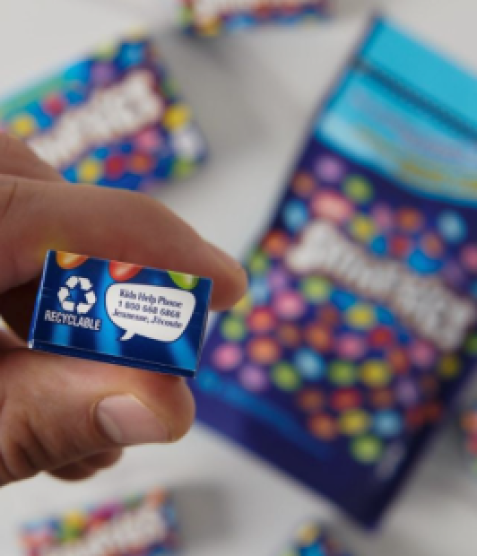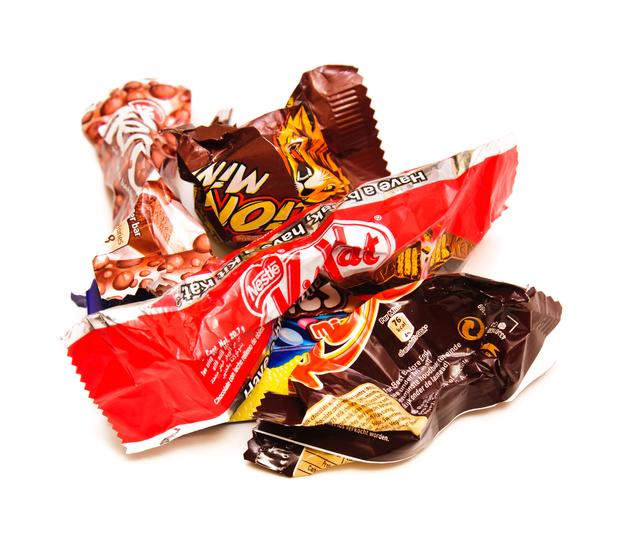Halloween candies: how to avoid excessive waste?
A pumpkin filled with treats is also a mountain of single-use plastic. Celebrating Halloween can cost the planet dearly…or not. Here's how to mark October 31 in anti-waste mode without (too much) breaking your head. 
A chocolate bar, gum and a lollipop, that's already three pieces of plastic (often numbered 6) that cannot be recycled. And that's when they aren't also wrapped in another non-recyclable plastic bag to facilitate distribution.
If it is utopian to eliminate individually wrapped sweets, in particular for food safety and health issues, according to zero waste experts Florence-LéaSiry and Laure Caillot, there is a way to green certain behaviors.
reusable bags
Does the hair stand on end when you see over-packaged vegetables at the grocery store? Avoid multiplying layers of plastic for treats.
To bring them together, Florence-Léa suggests replacing the Halloween bags with paper envelopes, scraps of fabric, kraft paper or any other material lying around your home that you can give a second life.
The co-founder of the Incita zero-waste cooperative, Laure Caillot, recommends completely getting rid of surprise bags. she amuses.
Long live the cardboard!
One can also prefer cardboard packaging to micro bags of gumdrops. Smarties, Nerds and dried fruits such as raisins are available in recyclable mini boxes.
Choose your sweets wisely

To avoid food waste, Laure Caillot advises parents who distribute sweets to only buy “safe values”. “We thus ensure that the sweet will indeed be consumed.”
When she goes door to door with her daughter, she also makes her aware of skipping houses that don't offer treats to her liking.
“I prefer not to distribute candies in bulk, for fear that they will be thrown away by parents who respect the standards established by Public Health.”– Laure Caillot, co-founder of the zero-waste cooperative Incita
Gather your packaging
Once the candy harvest has been devoured, remember to properly dispose of the wrappers. Instead of throwing them in the trash or dropping them randomly in the recycling, you can group them in another bag, a bread bag for example, and then put everything in the green (or blue) bin.
When they are scattered, sorting centers often consider them as harmful elements and throw them away.
To make sure that your municipality recycles them, go to the application Ça va loin? of Recyc-Quebec. You may be redirected to an ecocentre.
There are also local initiatives, such as that of the organization Effet Ph, which collaborates with TerraCycle to properly recycle candy wrappers. The plastic collected was notably used to make park benches, watering cans and flower pots.
Reinventing traditions
As Public Health always recommends accepting only individually wrapped nanas, Laure Caillot suggests having a candy hunt between trusted neighbors, as an alternative to the traditional door-to-door.
“When we are right between us, we have more latitude. I buy treats in bulk, I put them in mason jars or other jam jars, then we hide them everywhere. The spirit of play remains, security too, but we throw less. We can even get our pots back afterwards, ”rejoices the mother behind the zero waste blog Lauraki.
The Quebec company KandJu also offers buckets and cups filled to the brim with delicious Halloween-themed mixed candies that toddlers can share. The buckets are then reused in the sandbox or to store even more sweets.
“Door-to-door shopping will be less popular in the coming years, thinks Florence-LéaSiry, the eco-entrepreneur behind the blogChic frigo sans fric. We are going to celebrate Halloween according to our values.”
Instead, she suggests organizing a “horrifying zero-waste buffet” and inviting a few friends. We take bits of this and that and make a ghost spider to eat. A good brownie, even if it's not sprinkled with sour powder, pleases everyone,” she laughs.
Our “Do It Better” series offers behaviors to improve your health and that of the planet. To make a difference, go to the Environment section!
Articles recommended by the author
Subscribe to our newsletter and receive a daily summary of Montreal news.








